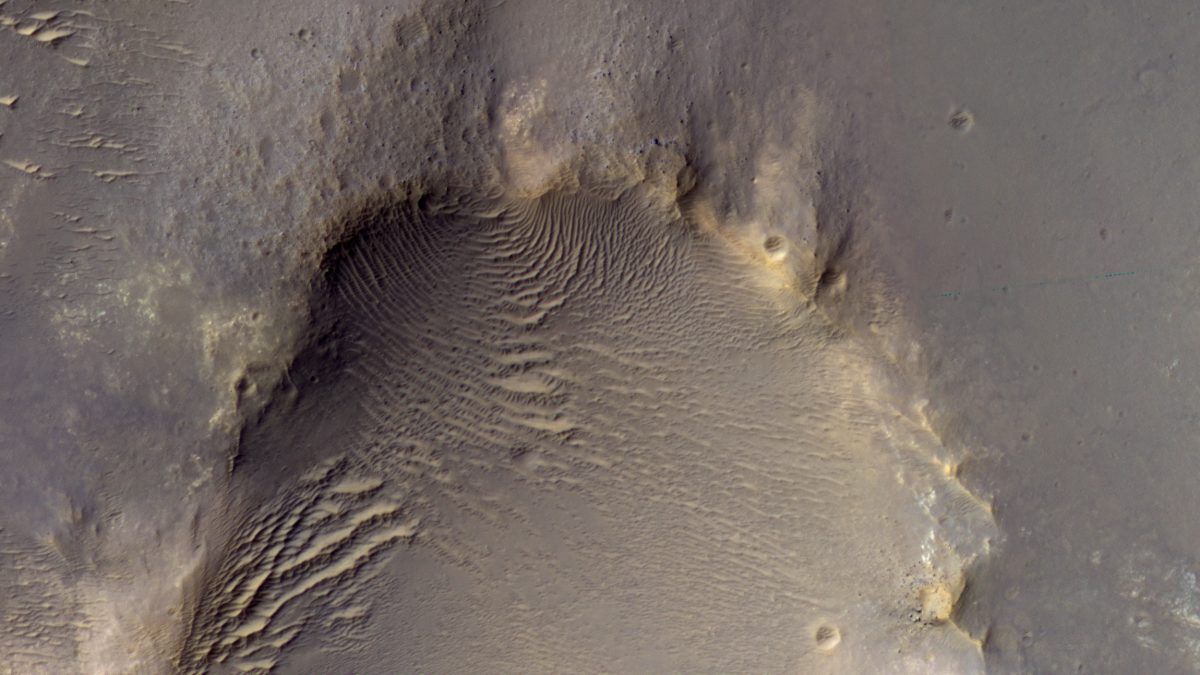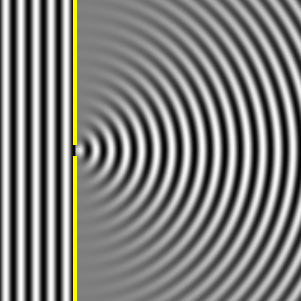Wind on Mars and the Huygens-Fresnel Principle

“Baby” dunes on Mars are big
March 5, 2018
Dune trails deep in Hebes Chasma, Mars
March 19, 2018How about some basic physics? It’ll be easy, I promise. Just look at the pretty picture below (click on it to see it better):

(HiRISE ESP_045586_1585), Image Credit: NASA/JPL/Univ. of Arizona
The big crater is ~400 m (1/4 mile) across. Wind blows sediment from the top to the bottom of the view, making some dune-like features (TARs, really) at the top and inside the crater. The rim at the top of the crater has a set of hills with a dip inbetween them, which allows wind and sediment to be funneled into the crater through a narrow valley. Once inside the crater, the wind expands laterally, so that some of the dune-like features form arcs, like ripples that form after you throw a rock into a pond.
This is a demonstration of the Huygens-Fesnel principle: that waves do their best to travel spherically outward in all directions. Most of the time, different parts of the waves cancel each other out, so the only time you can see their spherical (or in this case, circular) behavior is when they are funneled through a narrow opening. Wikipedia has a nice graphic of this effect in their Huygens-Fresnel Principle entry, shown here rotated 90 degrees from the example above:





2 Comments
Every weekend i used to pay a quick visit thіs wеbsitе, for the reason that i want enjoyment, ѕince
this this web ѕite conations gеnuinely pleasant funny material too.
Thanks! I’ll try to post more often.